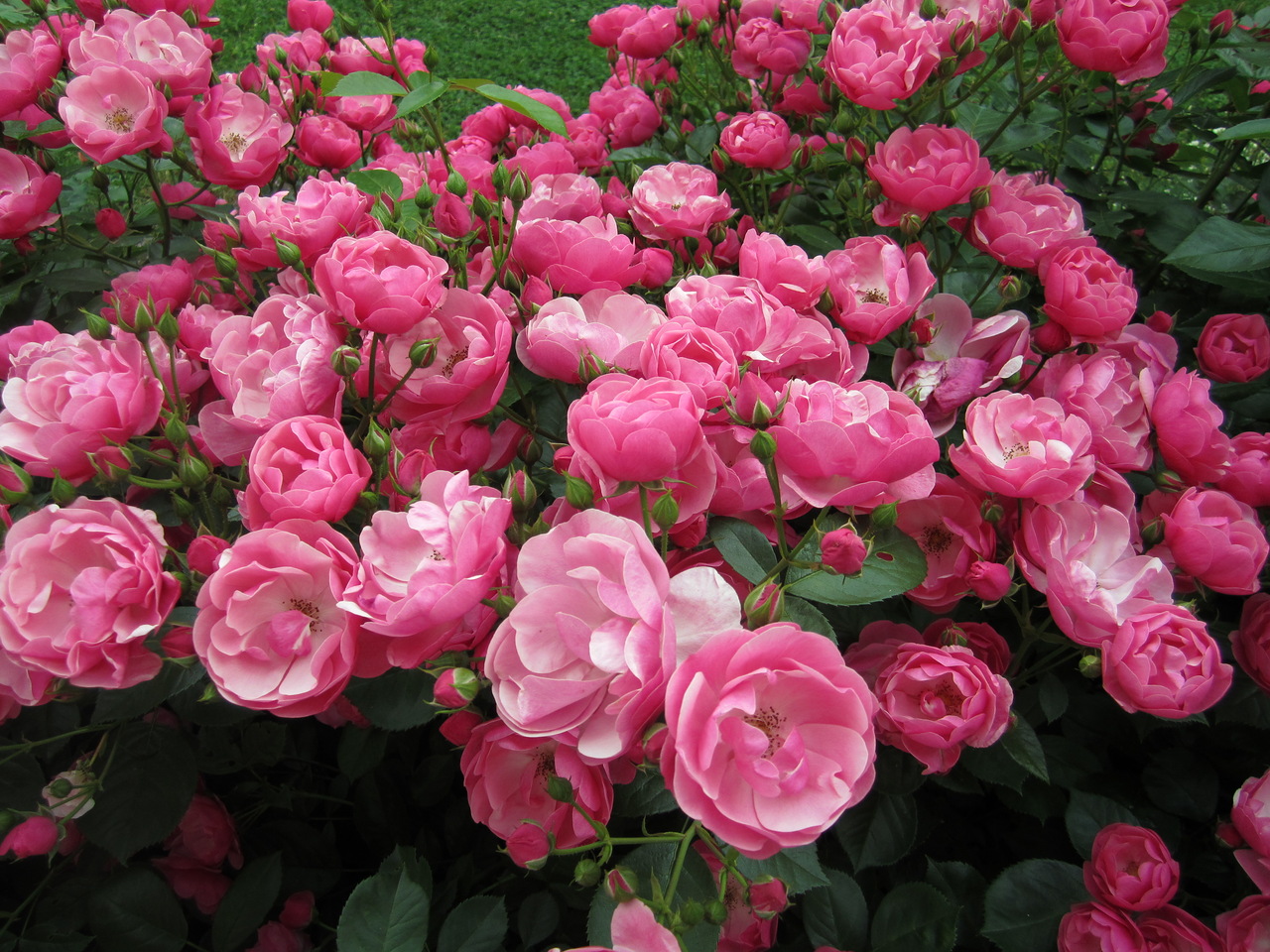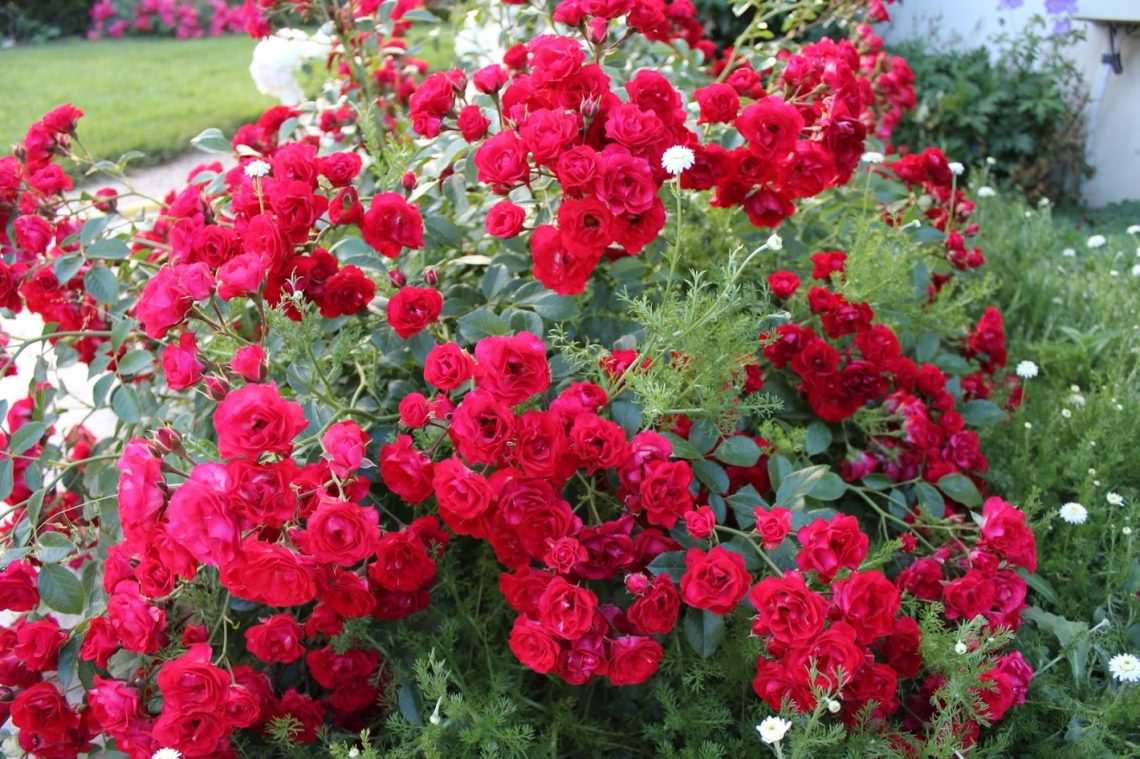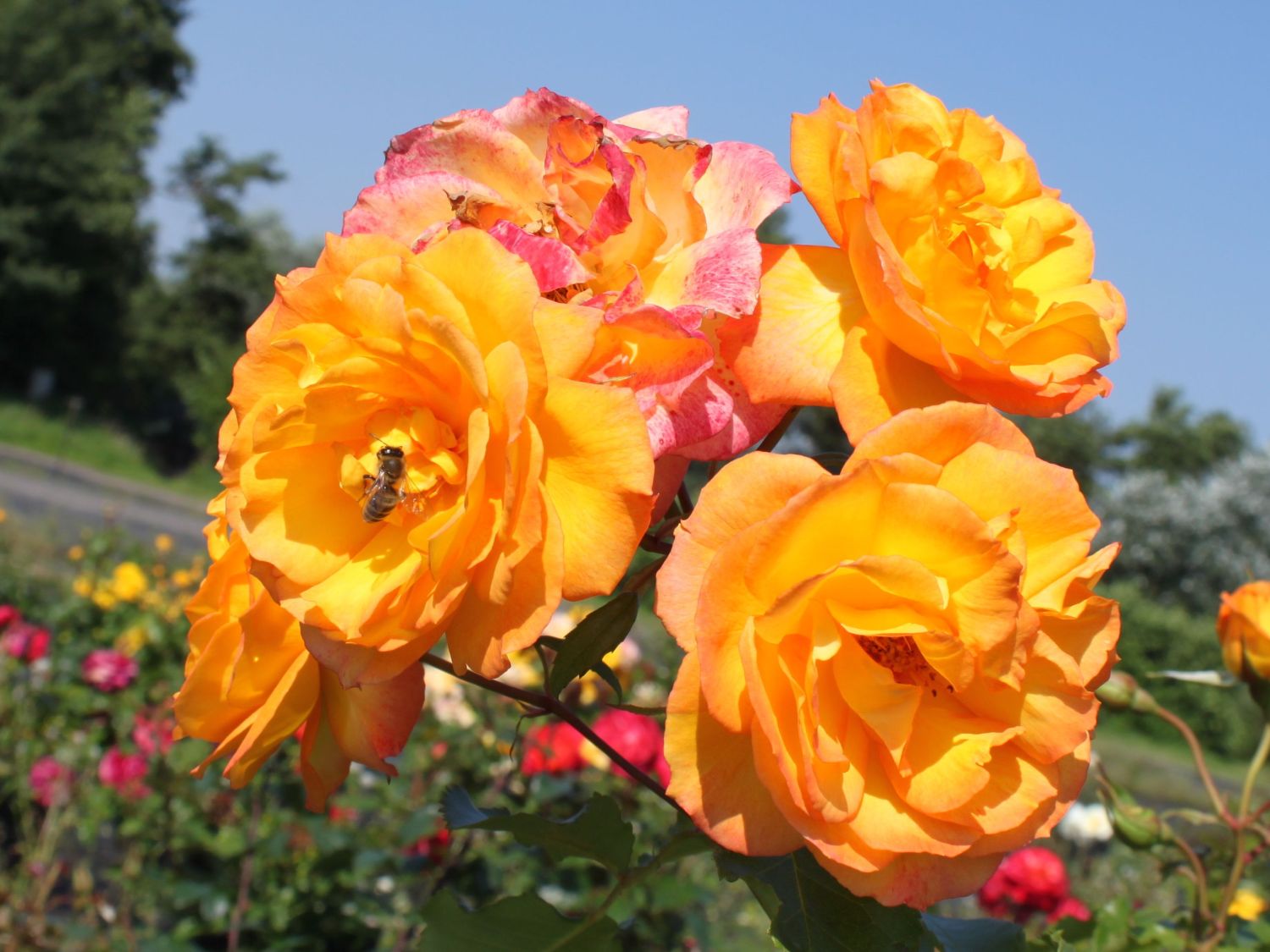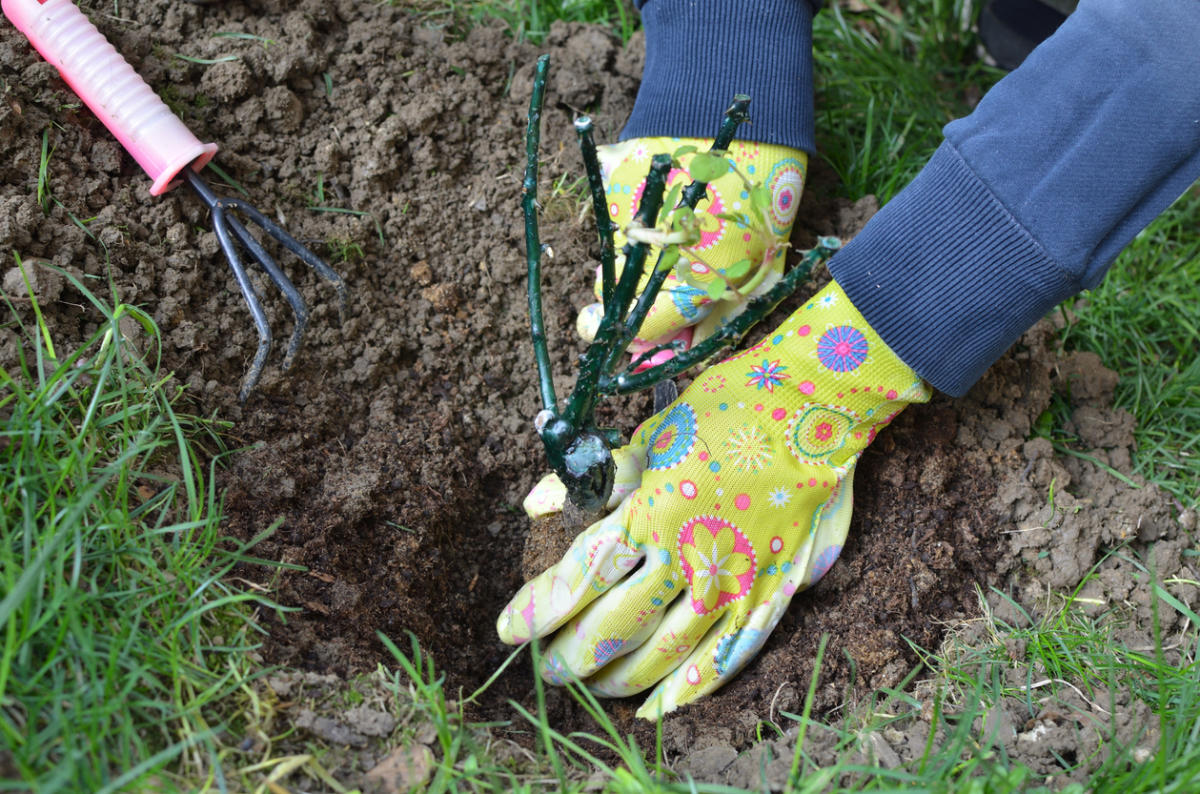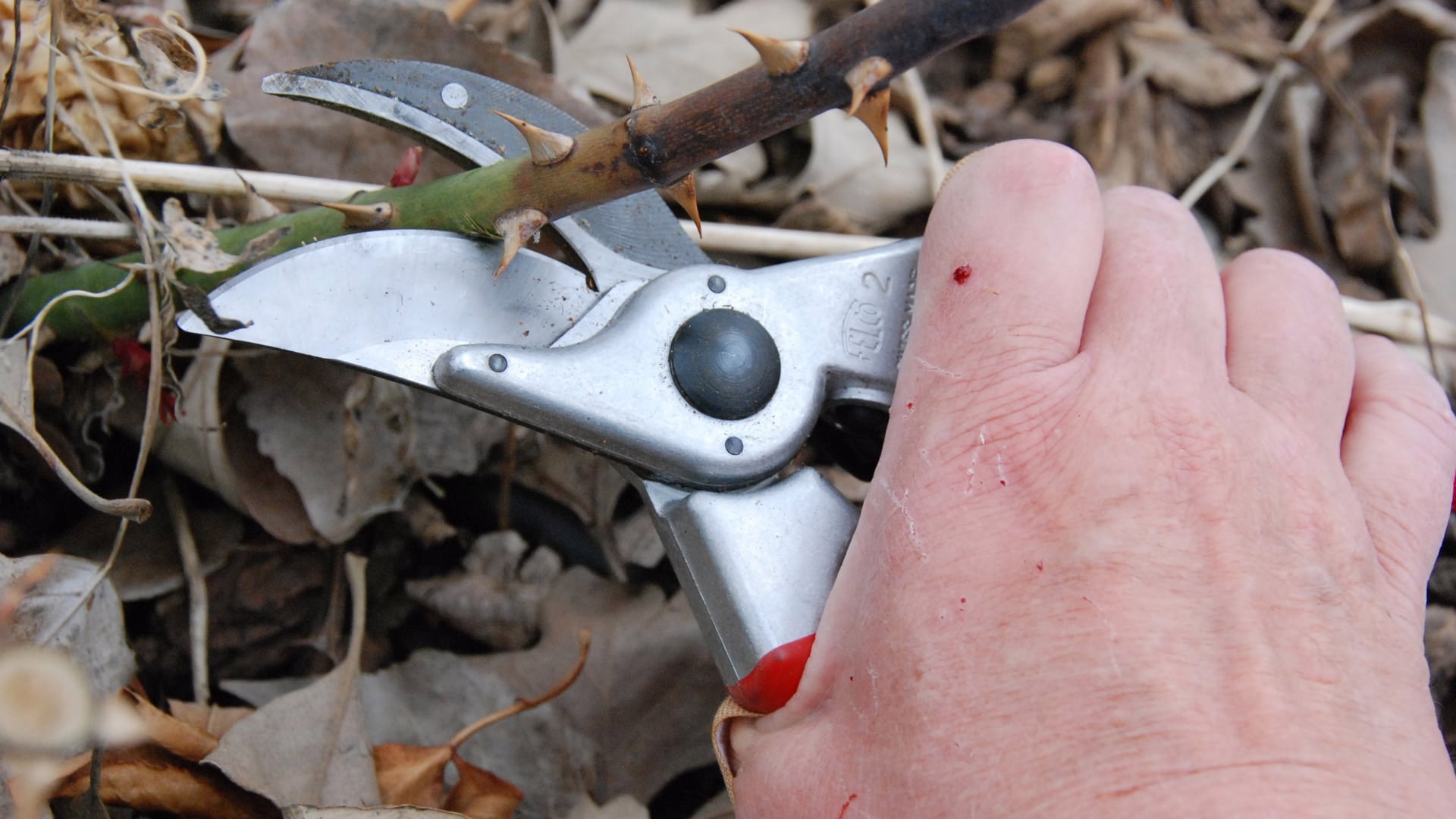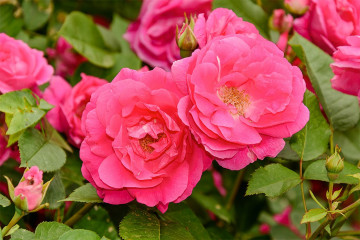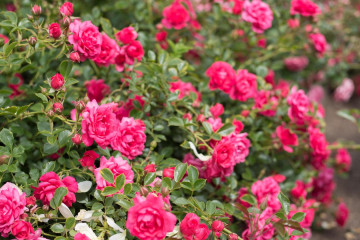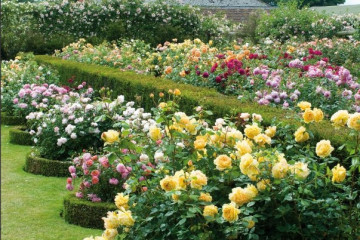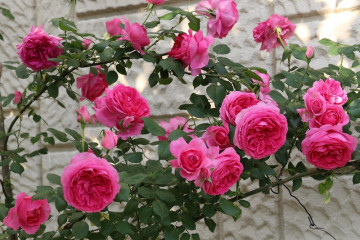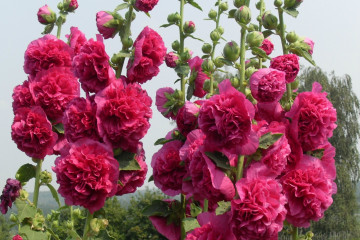What are shraba roses: the best varieties, planting and growing rules
Content:
Roses shrabs are a fairly young group. It includes a wide variety of representatives that differ in the nature of growth, size and shape of the flower. But all of them are united by high resistance to frost, disease, lush flowering and aroma. Due to their qualities and variety, these plants are popular among gardeners.
What are rose shrabs
Often newbies ask about shraba roses, what they are. Literally translated from English "shrub" means "bush". In reality, this group includes varieties that are not suitable for hybrid tea and floribunda. Most of the scrubs can be formed into both climbing and bush shapes.
Advantages and disadvantages, unlike park roses
They are often called parks. Also, ignorant amateurs ask the question: "Roses, shrubs and park roses, what is the difference." In some publications, they are really divided, noting the high frost resistance and unpretentiousness of the scrubs.
Benefits:
- The variety of types of flowers - by the number of petals from simple to densely doubled.
- The color of the bud is from monochromatic to mixed tones.
- They are able to bloom once and repeatedly.
- Flowering time - from early summer to autumn.
- Large varieties reach two meters in height.
- Disease resistant.
- Some species withstand winters with temperatures as low as -40 ºC.
The disadvantage of high varieties is the exposure of the lower part of the trunk and some sloppiness in the form of a bush. To avoid this, shrabs are grown in standard form or partners are planted with them.
Scrub groups
Representatives of scrub roses belong to different life forms. They are divided into the following groups:
- Nostalgic shrubs include landscape as well as English, French, German landscape varieties. A prominent representative of this group is the Soul variety of German selection.
- Canadian half-leafed shrubs. They are distinguished by their special frost resistance. For example, Cuthbert Grant.
- Ground cover forms with small or large flowers. These include Alpengluhen - a wide bush that reaches 0.5 m in height.
Popular varieties of rose scrub
Shrub roses - an extensive group with a variety of plants for every taste. Some of the popular varieties are:
- Westerland
The color of the buds is pink with an orange tint. The edges of the petals are lacy. Flower size up to 12 cm. They have a pleasant aroma. The buds are collected in inflorescences up to 9 pieces. Plant height - from 1.5 to 3.5 m.
In the description of the variety, it is noted that in the southern regions it is grown as a climbing form, in the northern regions - as a bush. In frosty, snowless winters, it is advisable to shelter.
- Jasmina
Has a pink color with a lilac tint. Flowers up to 7 cm grow in inflorescences of 10-15 pcs. The smell is strong enough, sweetish. This is a climbing rose scrub up to 2 m tall. It blooms again, with a large number of inflorescences. In cold areas requires shelter.
- Alpengluhen
The flowers are deep red with yellow stamens. Up to 5 cm in size. There are 9 petals in one bud. Groundcover. Height 0.5 - 0.6 m.
- White Meidiland
It has oval white buds 8 cm in diameter. One flower has up to 70 petals. The height of the bush is 0.5 - 0.8 m. Lush flowering. The plant is winter-hardy, unpretentious.
- Kordes Brillant
It blooms with scarlet, orange-red flowers up to 3 pieces on one stem. Cup-shaped buds are semi-double, 9 cm in size. They have a light aroma. The height of the bush is 1.5 m. It blooms again. Frost-resistant variety.
- Sahara
The flowers are golden. On the very edge of the petals - orange-red, up to 9 cm in diameter. There are up to 34 petals in a bud. Form inflorescences up to 9 pcs. Bloom again. They grow up to 1.5 m. The variety is not susceptible to diseases.
Planting a plant
It is important to choose the correct planting material and also take into account the time and place of planting. Otherwise, the roses will develop slowly and will not bloom for a long time, they may even die.
Selection of seedlings
The plant should be short, but with a lignified shoot. The optimal age is 1 year. A good seedling should not be damaged. It usually includes 1-3 shoots with 3-5 buds. The stem and leaves are elastic, not withered. The roots are moist, not dried out.
Time to plant scrubs
Depends on the climate. That is, in the southern regions, it is preferable to plant in mid-autumn. In 10 - 14 days, new roots will begin to grow. In the spring, the plant will be ready for active growth, and during the season it will turn into a full-fledged bush.
In a temperate climate zone, roses are planted in the fall 10-20 days before long frosts. A spring planting option is possible when the soil melts.
Landing requirements
The site should be open and sunny, without drafts. If this is a climbing form, then you need to think about the support for it in advance. When planting in a group, the nature and growth rate of the varietal plant are taken into account. The distance between specimens can be from 0.5 to 2 m, depending on the future size of the bushes.
If these are large varieties, then you should think about how you can mask their bases, which will become bare over time.
Preparing the planting pit and planting a shrub
The size of the planting hole depends on the soil in which the seedling will grow. If the soil is heavy, waterlogged or, conversely, very light, sandy, then it should be modified. The soil should be slightly acidic, loose and rich in minerals.
In the prepared hole, the straightened roots are freely placed, its borders pass where the root system of the rose ends. The graft is 3-6 cm under the soil.
After planting, a hole is made around the bush and shed thoroughly. If at the same time the lower part with the roots is exposed, then the soil is poured. It is recommended to add mulch in the spring, which will retain moisture and also keep the topsoil loose.
Care features
In the process of plant growth, fertilizer should be applied, a bush should be formed and shoots should be stimulated to active growth with the help of pinching, pinching and pruning, watering, and pest and disease control.
Fertilizer
With active plant growth, organic feeding is used - cow or horse manure. For the formation of rose buds, you can help with calcium nitrate, diluting 1 tbsp. spoon for 10 liters of water. Use shop complex feeding. By the middle of summer, fertilization is reduced, and at the end of summer, feeding is stopped altogether so that the plant retires.
Pinching, pinching, pruning
If the owner of roses wants to get large flowers, then the plants are stepchild. That is, they remove extra flowers and shoots from the sinuses, leaving the main bud.
For proper development and formation of the desired crown, the bush is pinched. At the same time, part of the young stems are removed, which are knocked out of the general shape. At the end of summer, pinching will not mean such a role, and it is stopped.
Adult bushes are subjected to this process if their shoots are frail. By pinching, you can control the flowering time.
The first pruning of the bush is carried out at planting. Lateral and underdeveloped stems are cut off. For the next growing seasons, strong shoots are shortened a little, sick and old ones are cut out.
There are main and additional pruning. The main one is carried out for plant formation and abundant flowering. It is mainly held in the spring. Additional pruning is needed in the warm season, as well as in the fall before sheltering the bushes for the winter.
How best to water scrubs
The soil of the roses should be constantly moist, but without stagnant water. Otherwise, the roots will have nothing to breathe and they will rot. The water temperature is not too cold, as plants can get cold. To retain moisture, the soil is mulched. Water in the morning or evening.
Diseases, pests and ways to control them
When fungal or bacterial diseases appear, plants are treated with a fungicidal or bactericidal agent.
Roses are susceptible to attack by thrips, spider mites and whiteflies. To prevent them, the following measures are taken:
- make sure that there are no damage and sticky deposits on the shoots;
- sprayed, since pests cannot stand moisture;
- treat with green soap twice a month.
Warming for the winter
Shrabs are for the most part winter-hardy. In climates with moderate winter temperatures, the base of the roses is insulated with a thick layer of mulch. If wintering is cold, it is recommended to protect the plants with spruce branches and covering material.
When insulating climbing roses, they dig a trench, lay a layer of spruce branches in it. Shoots are placed on top, and then spruce branches and covering material again. All this structure is fixed at the ground so that the whips do not rise.
With the establishment of warm weather and the end of prolonged frosts, the shelter is gradually removed.
The use of rose scrub in the arrangement of the garden
Shrub and climbing roses are grown as tapeworms; planted in groups. Climbing ones decorate gazebos, arches, fences. Ground covers are used in landscaping slopes, rocky areas. It can be either a composition of one variety or mixed groups.
Plants such as hosta, sage, clematis, bells, catnip, gypsophila, light-loving ferns look harmonious with roses.
Summing up all of the above, it becomes clear that growing scrubs is not so troublesome as compared to caring for other roses. This business is suitable even for a beginner. And it will be interesting for professionals to choose among the variety of shrub roses. Here you can find both proven varieties and new ones.
